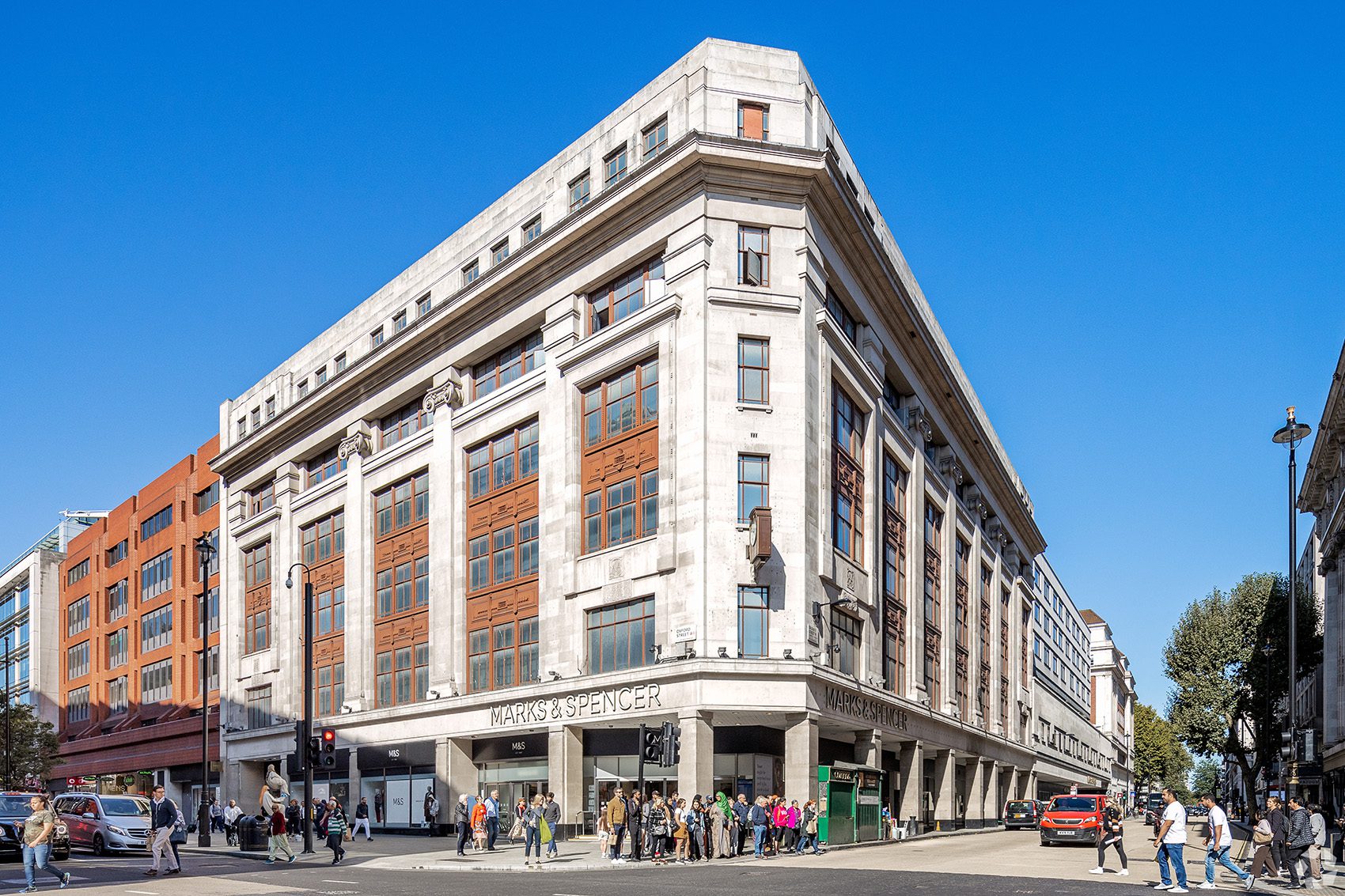Henrietta Billings, director of SAVE Britain’s Heritage, says the planning inquiry into controversial plans to raze and rebuild Marks & Spencer’s flagship Oxford Street store could change the future of construction.
Designed by Trehearne & Norman with WA Lewis, Orchard House was completed in 1930 and has been Marks & Spencer’s flagship Oxford Street store for decades.
Controversial plans by Marks & Spencer to raze and rebuild its handsome, 1930 Oxford Street building have united heritage and climate change campaigners alike. It shines a spotlight on the wasteful demolition of perfectly good buildings, and the need to re-use and retrofit our existing stock. It also raises important questions about how we keep alive the streets and buildings we cherish. Michael Gove’s recent request to call in the proposals is a welcome opportunity to bring national and local policies on carbon footprints and the future of our high streets to the heart of the debate.
Westminster City Council gave the proposals the green light in November, despite strong opposition from Labour Councillors who, following the local elections, are now running the borough. No planning permission had actually been granted when Gove called in the proposals, and it will be the first time heritage, carbon footprint and sustainability arguments are scrutinised centre stage at a public inquiry. That means there’s everything to play for.
The M&S Oxford Street redevelopment scheme has been designed by Pilbrow & Partners
The construction sector is responsible for about 40 per cent of UK carbon emissions. We lose more than 50,000 buildings a year by demolition, and construction is far more carbon-intensive than refurbishment. It feels like parts of the sector need dragging firmly into the 21st century.
The construction of the new M&S building is expected to release just under40,000 tonnes of CO2 into the atmosphere. Carbon emissions released today have a larger environmental impact compared to those released in the future, such as through a building’s ongoing use. This is because today’s emissions are in the atmosphere and contributing to global warming for longer. Therefore, major new sources of emissions such as the construction of this proposed new scheme are particularly damaging.
Working with journalist Will Hurst, and sustainability and carbon expert Simon Sturgis, we have used this campaign to drilldown into the environmental costs of demolition, and reiterate that ‘the greenest building is the one that already exists’, a message that fits hand in glove with our work to save historic buildings from unnecessary and wasteful loss.
Last September, M&S stated it was seeking to cut a third of its carbon emissions by 2025 and be fully net zero by 2045.Yet Simon Sturgis’s report, commissioned by SAVE, found that the M&S proposals do not comply with the UK Government’s legislation to reduce carbon emissions or the Greater London Authority’s stated policy to prioritise retrofit. The plans also run counter to Westminster City Council’s declaration of a climate emergency.
And it’s not just SAVE that is raising concerns. Leading figures in the worlds of architecture, property, heritage and the arts, including Kevin McCloud, London Eye designer Julia Barfield and Griff Rhys Jones, urged Gove to call in the plans.
Our recent publication, ‘Departing Stores’ shows how, with imagination and determination, historic ‘cathedrals of commerce’ can once again contribute to the life and vitality our high streets are crying out for, while telling the rich and opulent history of over a century of commerce. The M&S campaign has shown how vulnerable these buildings can be and how much public affection there is for them. The examples in the report, like Bobby’s in Bournemouth, where entrepreneurs and building owners shave successfully reinvented these beautiful buildings, show how adaptable they are.
We need a tighter legislative framework, and a sufficiently resourced planning regime that halts these damaging and wasteful schemes before they get near planning permission or a public inquiry. Over our almost 50-year history, we’ve shown time and time again how with imagination and determination you can re-use existing buildings without having to knock them down. Demolition must be the last, rather than the first resort. All eyes will be on this planning inquiry – an opportunity to make a landmark decision which will change the course of construction.
Source: Architecture Today





